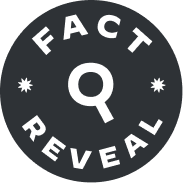WebMD Health Tuesday, June 6, 2023 6:13 PM Breastfeeding in infancy could have an effect on academic test scores later in a child's life, a new study suggests. |
WebMD Health Tuesday, June 6, 2023 4:45 PM If you're a woman who has long COVID, you may find yourself dealing with symptoms that could also indicate you're entering menopause. A recent study found that women over 40 years old are among the patients at higher risk for developing long COVID. Here's what to know. |
WebMD Health Tuesday, June 6, 2023 3:50 PM Learn about clean air in your home, including how to control moisture so that you don't get mold. |
WebMD Health Tuesday, June 6, 2023 2:50 PM Colorectal cancer is on the rise in youger people and in women. Here's what signs to look for and what age to screen. |
WebMD Health Tuesday, June 6, 2023 1:35 PM A new clinical trial shows adding a targeted breast cancer drug to hormonal therapy reduced the risk of cancer returning by 25% for women with early-stage disease. |
WebMD Health Tuesday, June 6, 2023 12:37 PM New clinical trials show radiation therapy might not be necessary in treating some forms of rectal cancer and lymphoma, sparing patients from the toxic treatment. |
Mark's Daily Apple Tuesday, June 6, 2023 5:33 PM To eat fruit or not to eat fruit. That is the question. It turns out that fruit is a contentious and sometimes confusing topic within the low-carb community. Some low-carb advocates argue that fruit should be strictly limited or avoided altogether, both because of the carbs and because they're wary of fructose. Yet some of the staunchest carnivore diet proponents are now incorporating fruit and promoting a "meat and fruit" approach. That's right, carnivore—billed as the ultimate zero-carb diet—now allows fruit (depending on who you ask). Even for folks who have no particular philosophical sway against or in favor of fruit consumption, it can be hard to decide which fruits, and how much, to include if they're aiming to reduce carbs. My stance has always been that fruit is a natural but not necessary part of the human diet. Sure, it's higher in carbs than meat or vegetables (on average), but fruits also come packaged with fiber, nutrients, and antioxidants that do a body good. Fruit can be a great way to add carbs around workouts if you so desire. Biting into the first perfectly ripe peach of the summer is a wholly hedonic experience. But for folks watching their carb intake, and especially for those following a very low-carb ketogenic diet, it won't do to chow down on massive bowls of fruit salad for breakfast. Here's how I weigh the relative merits of different fruit options. Choosing the Best Low-Carb Fruits There's no definitive algorithm that can spit out a low-carb acceptability rating for a given fruit, but the factors below are the ones I consider relevant to this question. 1. Start with the amount of carbohydrates and fiber in a typical serving. Carbohydrates because… obviously, and fiber because fiber doesn't get absorbed and converted into glucose. Instead, it mostly travels through the gut, where commensal microbes "feed" on certain types. That's why some people only count net carbs, which is total carbs minus fiber. I don't bother getting that granular. Counting total carbs is less work and avoids debates about whether to subtract fiber from all sources or only certain ones. Just understand that if you're comparing two pieces of fruits with similar carb content, the higher fiber one will probably have less of an impact on blood sugar. You can stop there, or you could also… 2. Consider the antioxidant value. Antioxidants are compounds that help mitigate cellular damage due to free radicals, and fruit happens to be a terrific source of antioxidants (although herbs and spices are even better). But not all fruit is created equal here. The antioxidant power of different foods is measured by Oxygen Radical Absorbance Capacity, or ORAC. Higher is better. 3. Consider the glycemic index (GI) and glycemic load (GL). I don't find GI or GL especially worth worrying about, but you might care if your doctor has prescribed a low-GI/GL diet. Glycemic index measures how much individual foods raise blood sugar when you eat a certain amount of carbohydrate—50 grams … Continue reading "Best Low-Carb Fruit Choices" The post Best Low-Carb Fruit Choices appeared first on Mark's Daily Apple. |
Dignity Health Medical Groups Blog Tuesday, June 6, 2023 3:39 PM Pickleball is one of the fastest-growing American sports and is only continuing to rise in popularity as summer approaches. But as with many activities, injuries are likely to happen without proper technique and preparation. |

















